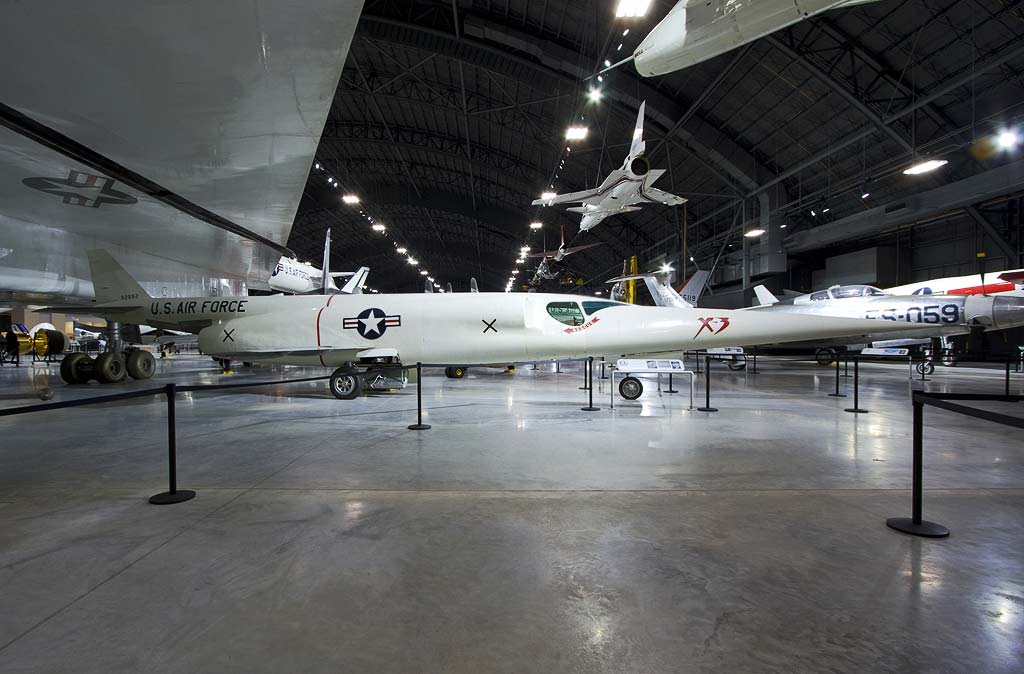The Douglas X-3 Stiletto was a sleek, experimental jet aircraft designed for high-speed, high-altitude flight, notable for its slender fuselage and pioneering use of titanium.
The Douglas X-3 Stiletto stands as a significant yet controversial aircraft in the annals of aviation history. Designed during the early stages of the jet age, it was a bold step into the exploration of extreme flight conditions.
History of the Development of the Douglas X-3 Stiletto
The Douglas X-3 Stiletto emerged in an era marked by rapid advancements in aviation technology and a pressing need for superior aircraft to maintain an edge in the Cold War. This period witnessed a flurry of experimental designs, as engineers and designers pushed the boundaries of speed, altitude, and aerodynamics.
The X-3 Stiletto’s development was driven by the U.S. Air Force’s desire to explore sustained high-speed flight, particularly to study the effects of heat on airframe structures at high speeds. Officially initiated by the U.S. Air Force and Douglas Aircraft Company, the program aimed to fill a critical gap in high-speed flight research.
The aircraft first took to the skies on October 20, 1952. As an experimental aircraft, it did not receive a NATO nickname, which is typically assigned to operational military aircraft.
Design of the Douglas X-3 Stiletto
The Douglas X-3 Stiletto was distinguished by its slender, needle-like fuselage and long, narrow wings. The design was groundbreaking, primarily for its extensive use of titanium, which was a relatively new aerospace material at the time.
In terms of dimensions, the aircraft measured 66 feet 9 inches (20.35 meters) in length, with a wingspan of 22 feet 8 inches (6.91 meters). The slender body was designed to minimize drag and enhance high-speed performance, a concept that was radical for its time.
However, the design came with drawbacks. The narrow wings, while reducing drag, also limited the aircraft’s lift capabilities. This issue, combined with the underpowered engines, prevented the X-3 from achieving its intended speed goals.

Performance of the Douglas X-3 Stiletto
The X-3 was powered by two Westinghouse J34-WE-17 turbojet engines, each producing 3,370 pounds of thrust. Despite this, the aircraft’s performance fell short of expectations. It was intended to reach speeds exceeding Mach 2, but the highest speed achieved was around Mach 1.2.
In terms of altitude, the X-3 was designed to operate at high altitudes, but its actual performance was limited due to engine constraints. The range was similarly affected, falling short of initial projections.
When compared to its contemporaries, such as the North American X-15, the X-3 was less successful in achieving high-speed milestones. The X-15, for example, broke several speed and altitude records, while the X-3 struggled to meet its design objectives.
Military Use and Combat of the Douglas X-3 Stiletto
The X-3 Stiletto was not armed and did not see any combat use, as it was strictly an experimental aircraft. It did not participate in any military operations or conflicts.
The aircraft’s primary contribution was in the realm of research and development. Its flights provided valuable data on aerodynamics, high-speed flight characteristics, and the use of titanium in aircraft construction.
Despite its limitations, the X-3 laid the groundwork for future aircraft designs. Its influence can be seen in later aircraft, particularly in the area of high-speed, high-altitude flight.
The X-3 Stiletto was never sold to other countries and remained a unique prototype. Its operational life was relatively short, and it was eventually superseded by more advanced designs.
The Douglas X-3 Stiletto was a bold foray into uncharted territories of aviation. While it did not fulfill all its intended goals, its contributions to the field of aeronautics, especially in high-speed flight research and the use of innovative materials, have left a lasting impact on aircraft design and engineering. The lessons learned from the X-3’s limitations and achievements have echoed through subsequent generations of aircraft, shaping the future of aviation.
Back to the experimental aircraft section.